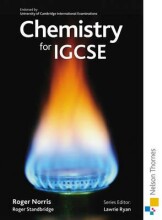Particles and Purification - Methods in purification
6 important questions on Particles and Purification - Methods in purification
What is a solution
How does filtration work
What is a centrifuge
- Higher grades + faster learning
- Never study anything twice
- 100% sure, 100% understanding
How does crystallisation work
How do you know the crystallisation point is reached
How does solvent extraction work
The question on the page originate from the summary of the following study material:
- A unique study and practice tool
- Never study anything twice again
- Get the grades you hope for
- 100% sure, 100% understanding































